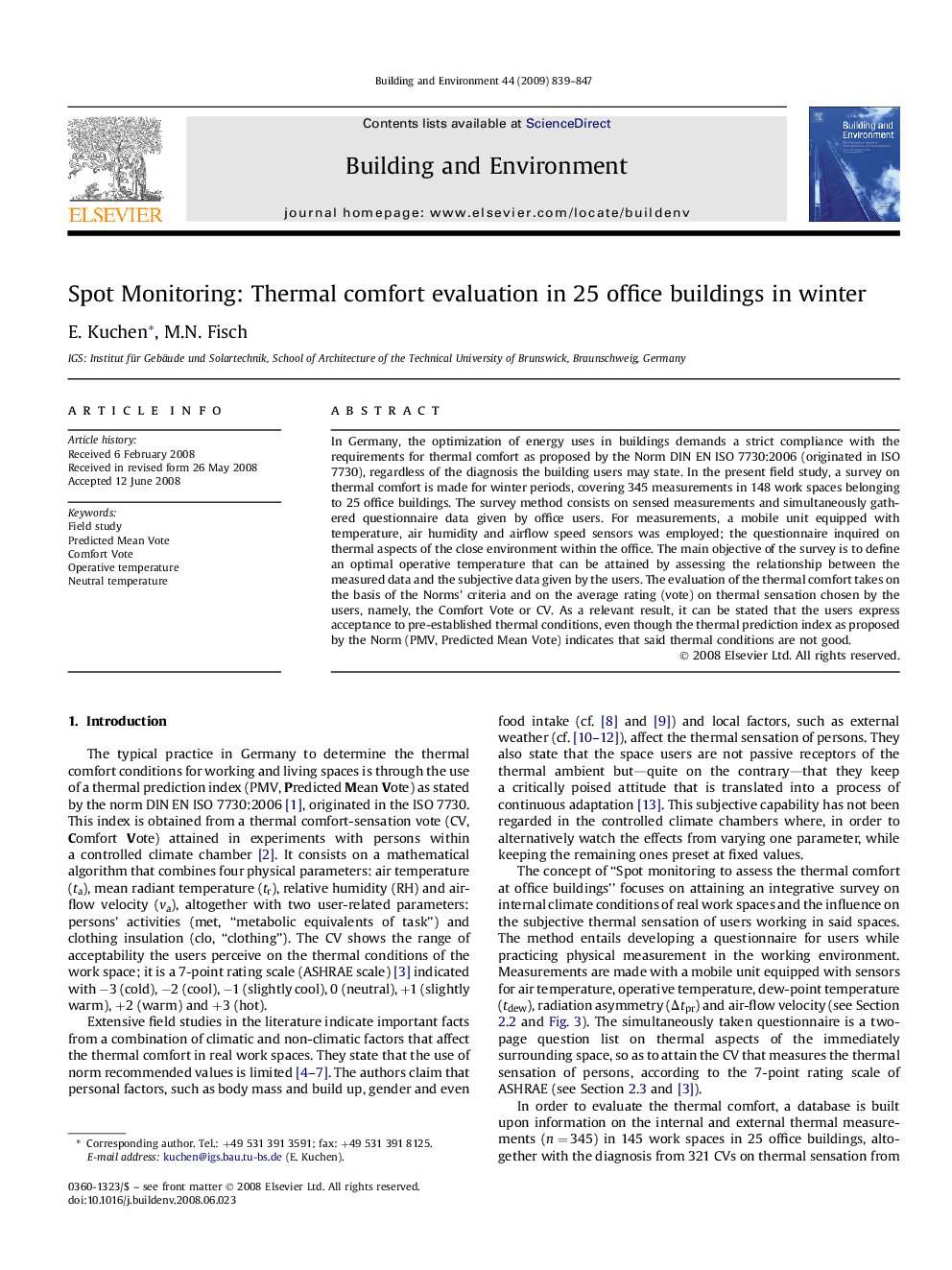| Article ID | Journal | Published Year | Pages | File Type |
|---|---|---|---|---|
| 249597 | Building and Environment | 2009 | 9 Pages |
In Germany, the optimization of energy uses in buildings demands a strict compliance with the requirements for thermal comfort as proposed by the Norm DIN EN ISO 7730:2006 (originated in ISO 7730), regardless of the diagnosis the building users may state. In the present field study, a survey on thermal comfort is made for winter periods, covering 345 measurements in 148 work spaces belonging to 25 office buildings. The survey method consists on sensed measurements and simultaneously gathered questionnaire data given by office users. For measurements, a mobile unit equipped with temperature, air humidity and airflow speed sensors was employed; the questionnaire inquired on thermal aspects of the close environment within the office. The main objective of the survey is to define an optimal operative temperature that can be attained by assessing the relationship between the measured data and the subjective data given by the users. The evaluation of the thermal comfort takes on the basis of the Norms’ criteria and on the average rating (vote) on thermal sensation chosen by the users, namely, the Comfort Vote or CV. As a relevant result, it can be stated that the users express acceptance to pre-established thermal conditions, even though the thermal prediction index as proposed by the Norm (PMV, Predicted Mean Vote) indicates that said thermal conditions are not good.
